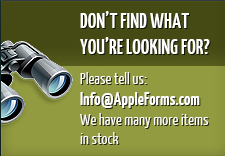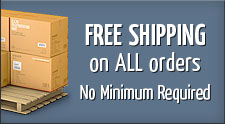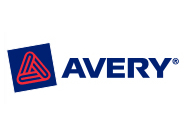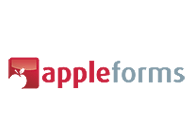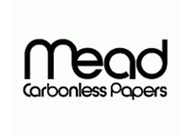Do you remember being at the diner, as the waiter wrote down your order on those thin paper notepads with the blue carbon paper sheet inside of them?
If you notice, you don’t see them around too much anymore. Why? Because as the acronym implies, NCR (No Carbon Required)
Today the paper you write on itself has the mechanisms for transferring what you wrote on the top page to the sheets below without the need of the old famous carbon sheet paper.
NCR paper was invented by two chemists working for the NCR Corporation as a substitute for carbon paper.
The back of NCR paper is coated with micro-encapsulated dye and the front is coated with a reactive clay.
When the NCR paper is written on with a pen or other writing (pressure) tool, the pressure from the point of the pen causes the micro-capsules coated on the back to burst spilling the dye onto the front of the sheet below making contact with the reactive dye and therefore creating a mark.
NCR paper is available in many different color's and what coating each sheet gets depends on the order and number of parts in the Carbon-less Form.

For example, in a 3 part (Carbon-less) NCR form:
White CB (coated back): The 1st sheet is usually white in color and does not require a clay coating on the front since it will be written on directly. The back is coated with the micro-encapsulated dye in order to transfer to the second sheet.
Yellow CFB (coated front and back): The 2nd NCR sheet is usually yellow which will be coated with clay on the front to react to the dye from the back of part 1 and also coated with the dye on the back in order to transfer the writing to part three.
Pink CF (coated front): Sheet 3 will be pink and coated on the front with the clay coating only since it has nothing more to transfer to through the back.
Note: Any of the above papers can also be printed on the back without preventing the coating to do its job. (normally used for Terms and Conditions)
NCR Form Binding Carbon-less forms are used by a wide range of businesses and institutions creating the need for different types of binding for specific uses. Here are a few examples of common NCR form binding types:
Edge Glued: Standard and least expensive when you order a small quantity, when you order more than 5,000 sets, Snap Set Carbonless Forms will be about the same in price.
Snap Set: A step up from the standard edge glued form, a snap set can keep parts together and allows for parts to be easily “snapped” off via a micro perforation at the stub.
Manifold Book: This is basically a Snap Set in book form. Specifically designed to keep copies protected for extended periods of time. Police use(d) these to write tickets and also used for commercial vehicle inspection reports.
NCR Finishing Options
NCR - Carbonless forms are used to keep records. Since most of these records are going to be stored for a longer time they need to include some way to be indexed and easily found:
Numbering
Marginal Words
Hole Punch
More Options
We also have a lot more extra options not listed above, such as adding a blow on label on top of part 1 Commonly used for Laboratories, we can also add bar codes and a lot more, ask for Special Quote Request



